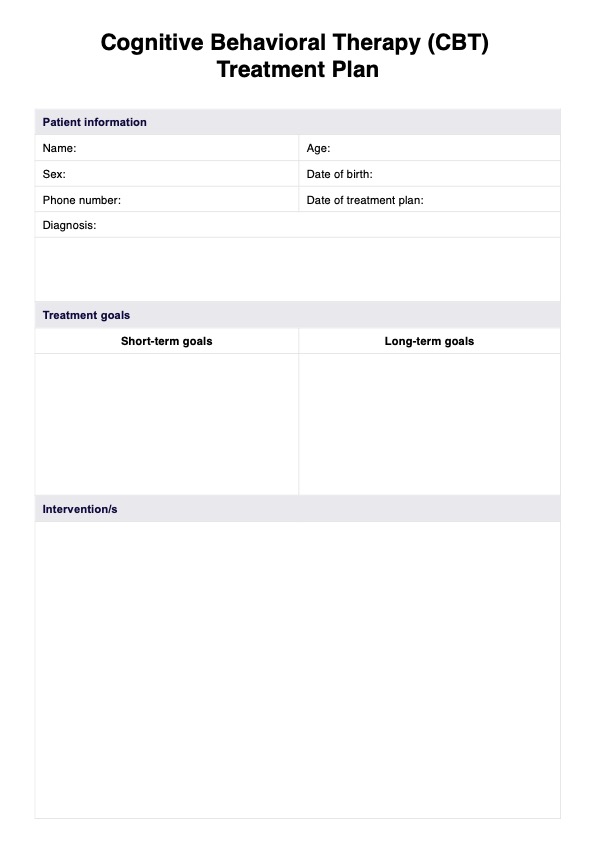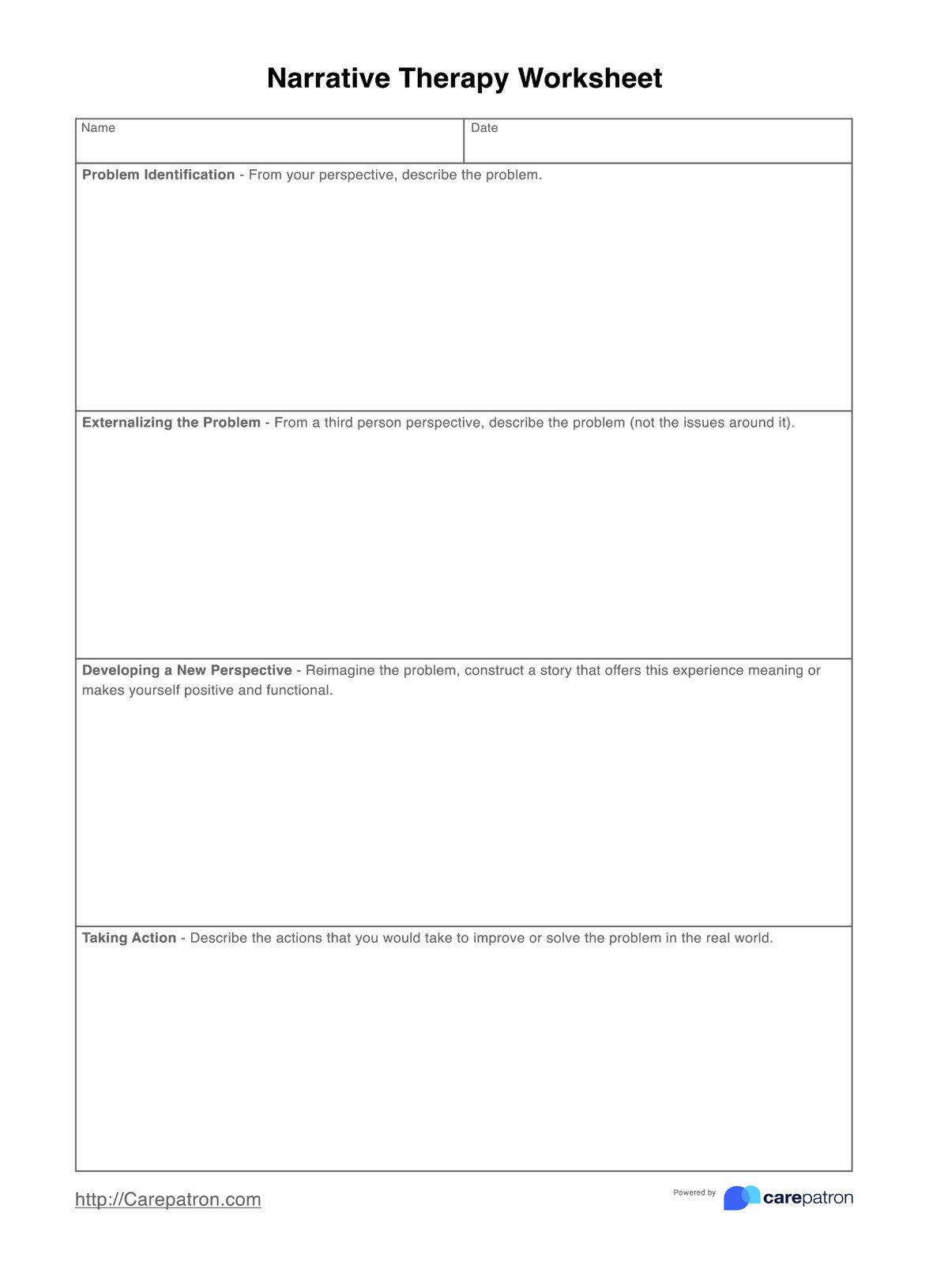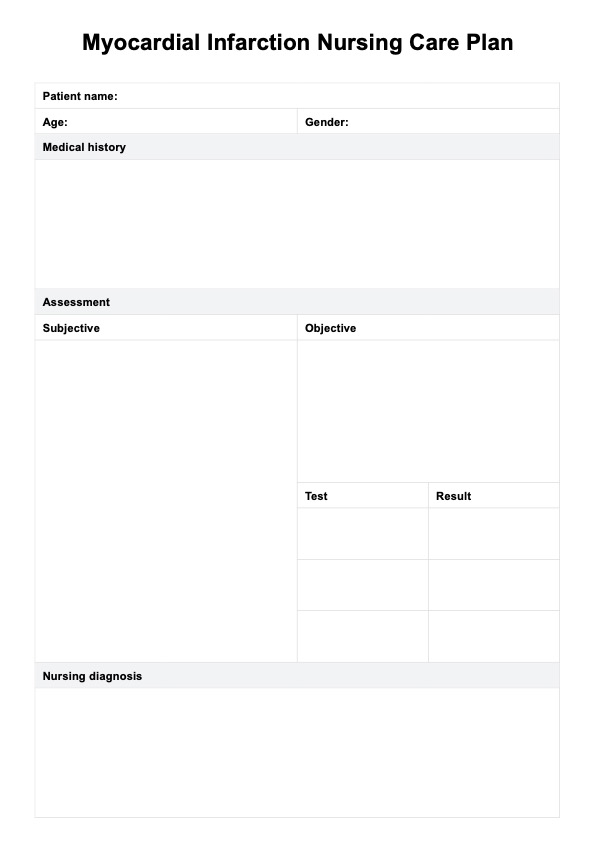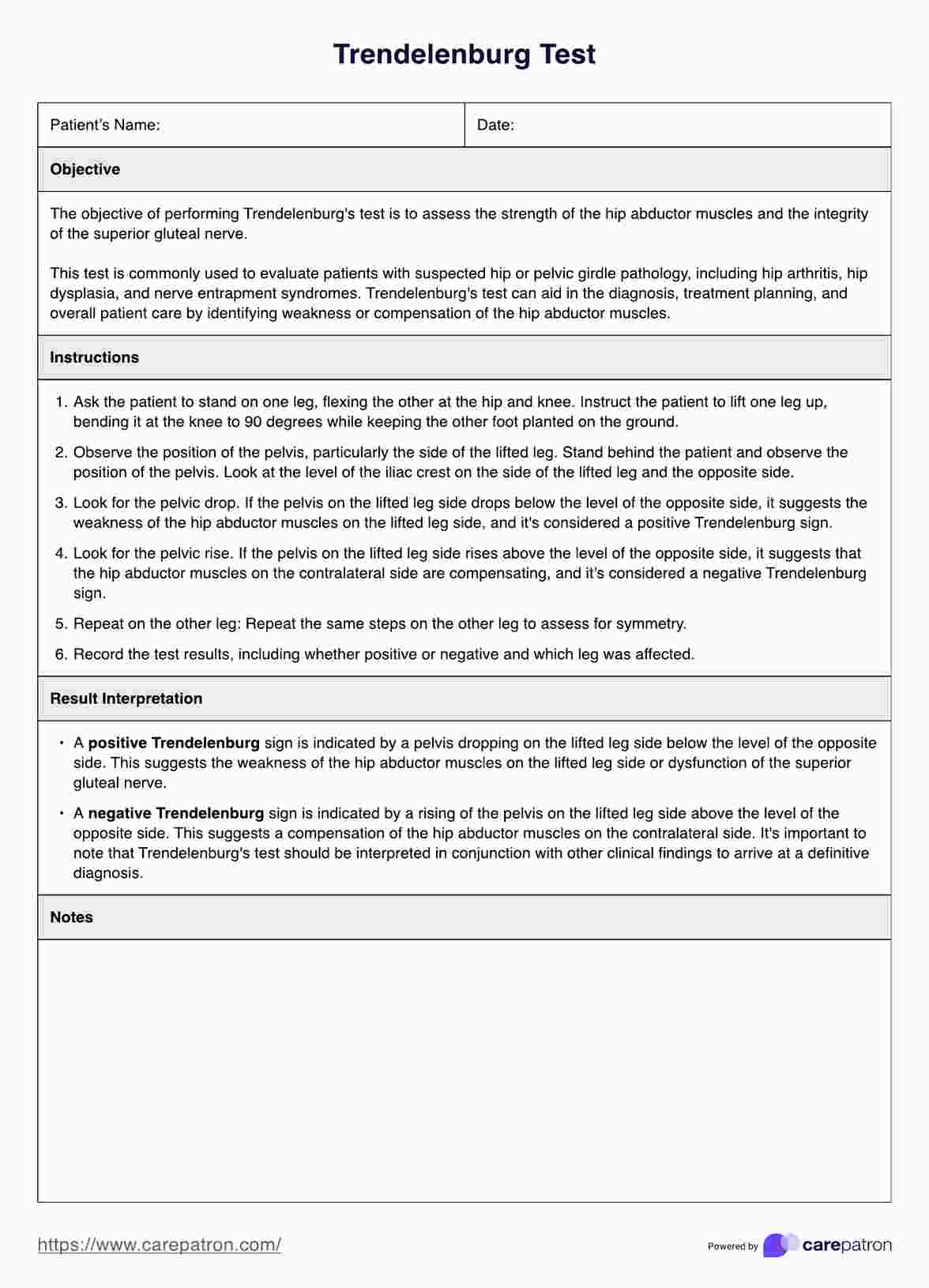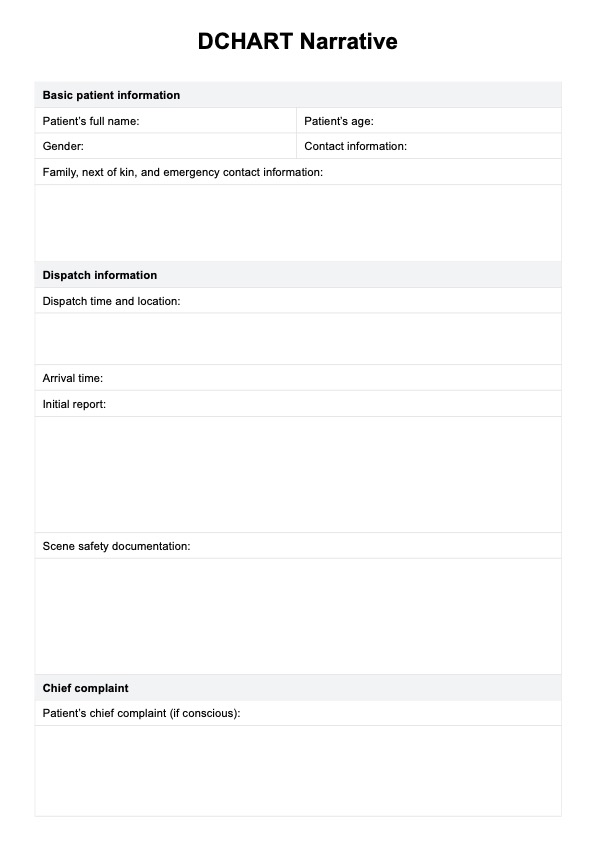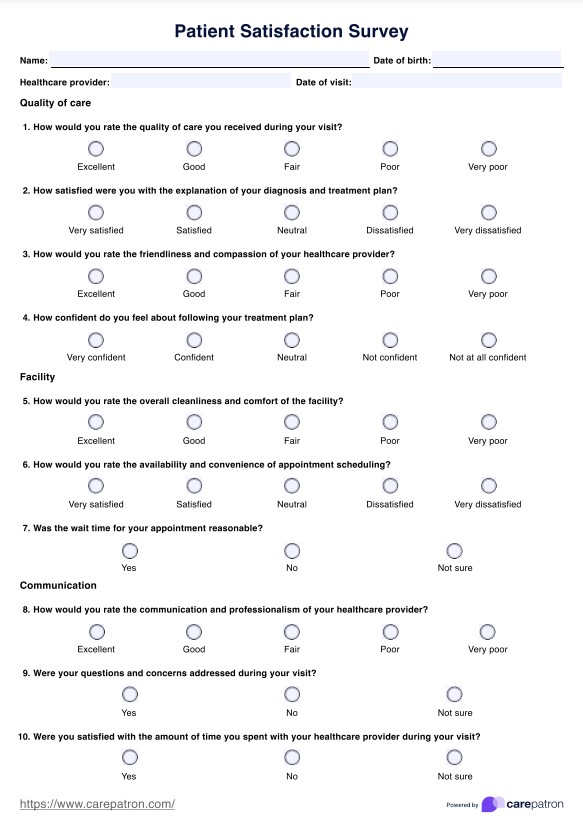High-Functioning Depression Test
If you suspect that your client is depressed, use our High-Functioning Depression Test template for quick and easy screening today.


What is high-functioning depression?
Clinical depression, also known as major depressive disorder, is a serious mental health condition characterized by persistent feelings of sadness, hopelessness, and a loss of interest in activities. It significantly impacts a person's feelings, thoughts, and behavior and can lead to various emotional and physical problems. Clinical depression is one of the mental health conditions that the American Psychiatric Association (APA) provides diagnostic criteria for in the Diagnostic and Statistical Manual of Mental Disorders (DSM).
Depression is a common mental illness globally. According to the World Health Organization, more than 264 million people of all ages suffer from depression. It can significantly impact daily life, often leading to reduced productivity, strained relationships, and a diminished quality of life.
High-functioning depression, often akin to persistent depressive disorder, differs from clinical depression primarily in how it presents itself. Individuals with high-functioning depression can maintain their daily responsibilities and outwardly appear fine, yet internally, they may struggle with significant depressive symptoms. This form of depression often goes unnoticed because those affected are typically able to function in work and social settings. It is also worth noting that high-functioning depression is not a clinical diagnosis and is also not considered a disorder.
The causes of depression are varied, including genetic, biological, environmental, and psychological factors, with some instances being exacerbated by seasonal affective disorder during specific times of the year. Stressful life events, personal history, and other co-occurring mental health disorders can also contribute to the development of depression.
High-Functioning Depression Test Template
High-Functioning Depression Test Example
How to use our High-Functioning Depression Test template
Our High-Functioning Depression Test template is a quick and easy way for healthcare professionals to screen clients for symptoms of high-functioning depression. Follow these simple steps:
Step 1: Access the template
Start by clicking the “Use template” button to open the test on the Carepatron app, where you can customize and share it. Alternatively, click “Download” to save a non-customizable PDF that you can print or fill out digitally.
Step 2: Administer the test
Once you have the template ready, explain to the client how the test works. Have them complete the test by rating each statement based on their experience over the past two weeks. Be sure to provide a comfortable environment so they can reflect on their answers. Alternatively, you can answer the test yourself while having a conversation or interview with your client.
Step 3: Record and evaluate the results
Once the client finishes the test, calculate the total score. Record it and take note of any high-scoring symptoms. Use the provided guidelines to categorize the results and discuss what they mean with the patient.
Step 4: Discuss the results with the patient
After evaluating the test, explain the implications of the results to the client. Encourage an open discussion about their feelings and experiences. Depending on the score, you can suggest further evaluations or mental health interventions. This step is crucial for engaging the client in their treatment plan.
This template serves as a preliminary screening tool and helps guide the next steps in a client's healing journey, including formal diagnosis and tailored treatment options.
Interpreting the results
The High-Functioning Depression Test provides insight into whether a patient is having significant symptoms of high-functioning depression, but it is not a diagnostic tool. The total score, which ranges from 0 to 30, helps guide mental health professionals in assessing the severity of symptoms.
- 0-9: Minimal or no symptoms
- 10-14: Mild symptoms
- 15-21: Moderate symptoms
- 22-30: Severe symptoms
A formal diagnosis should always follow a comprehensive evaluation by a mental health professional. Based on the diagnosis, treatment plans may involve cognitive behavioral therapy, addressing any co-occurring conditions such as substance abuse or other mental illnesses. Keep in mind that high-functioning depression may not fit neatly into traditional diagnostic categories, so a nuanced approach is essential. For more insight into a patient's condition, use this test as a screener before resorting to more comprehensive tools, such as the Major Depression Inventory.
High-functioning depression symptoms and signs
High-functioning depression, while less apparent than major depressive disorder (also known as major depression), is often described in clinical settings with the following characteristics:
- Persistent tiredness or lack of energy: Despite maintaining normal functioning, individuals may constantly feel fatigued or have low energy levels, often accompanied by a depressed mood.
- Hopelessness or pessimism: A general feeling of despair or a negative outlook towards the future, even if they seem to be coping well externally.
- Feelings of worthlessness or excessive guilt: Internal struggles with self-esteem and a disproportionate sense of guilt or worthlessness.
- Difficulty concentrating or making decisions: Challenges in staying focused or making decisions, which they might mask in professional settings.
- Loss of interest in activities: A decline in enjoyment or interest in once pleasurable activities, often hidden behind a façade of normalcy.
- Changes in sleeping patterns: Disrupted sleep, either insomnia or hypersomnia, which they hide in their daily routine.
- Appetite or weight changes: Significant changes in eating habits, leading to weight loss or gain, often overlooked due to their ability to function effectively.
- Restlessness or agitation: Feelings of being on edge or restlessness, which might be more internal than observable.
- Thoughts of death or self-harm: Concealed thoughts about death or self-harm, not typically shared with others.
- Feeling unfulfilled despite achievements: A sense of emptiness or dissatisfaction even after accomplishing goals or tasks.
It's important to note that individuals with high-functioning depression may not exhibit all these symptoms—each person experiences symptoms differently. High-functioning depression is also not recognized as a formal mental health diagnosis in the DSM-5. While it is often described in clinical settings, it lacks specific diagnostic criteria. Yet, identifying these signs early on is crucial for effective intervention and support, especially for those going through severe depression.
Commonly asked questions
The hardest type of depression is often considered to be treatment-resistant depression (TRD), where standard treatments like medication and therapy are less effective. This form of depression may require more advanced interventions such as electroconvulsive therapy (ECT) or transcranial magnetic stimulation (TMS).
If you're experiencing symptoms like persistent low mood, lack of enjoyment in activities, fatigue, and feelings of worthlessness yet still managing your daily life effectively, you may be struggling with high-functioning depression. You may also take a test for high-functioning depression.
High-functioning depression can be treated without medication through therapies like cognitive behavioral therapy (CBT), mindfulness practices, regular physical exercise, and lifestyle changes. These interventions focus on developing coping strategies and addressing negative thought patterns.


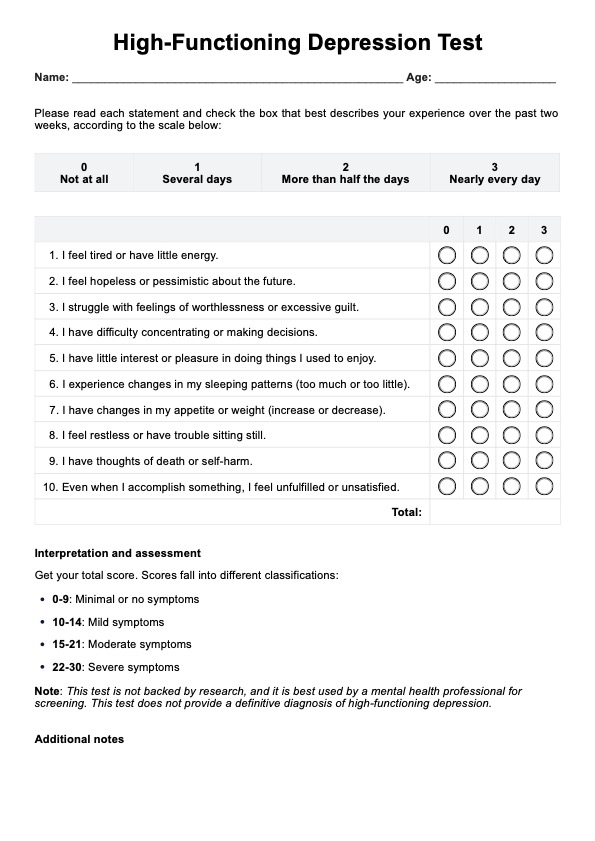
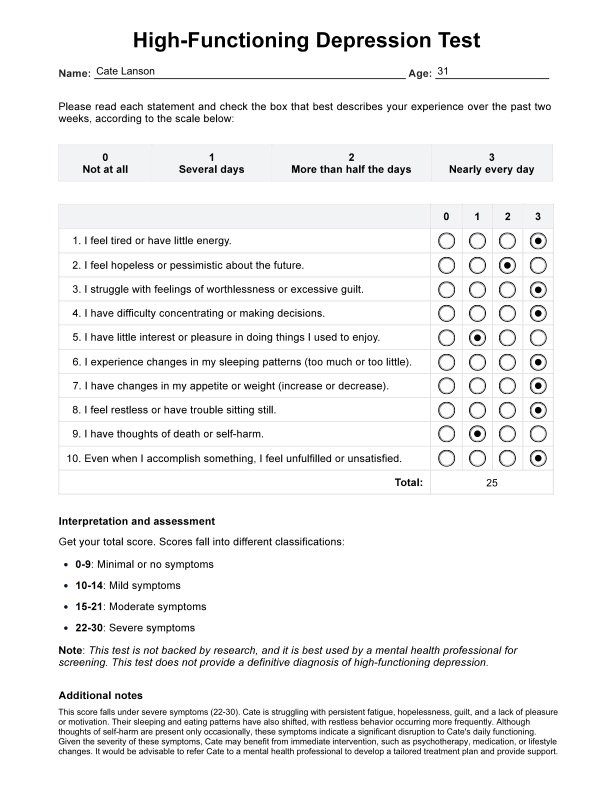





















-template.jpg)














































































